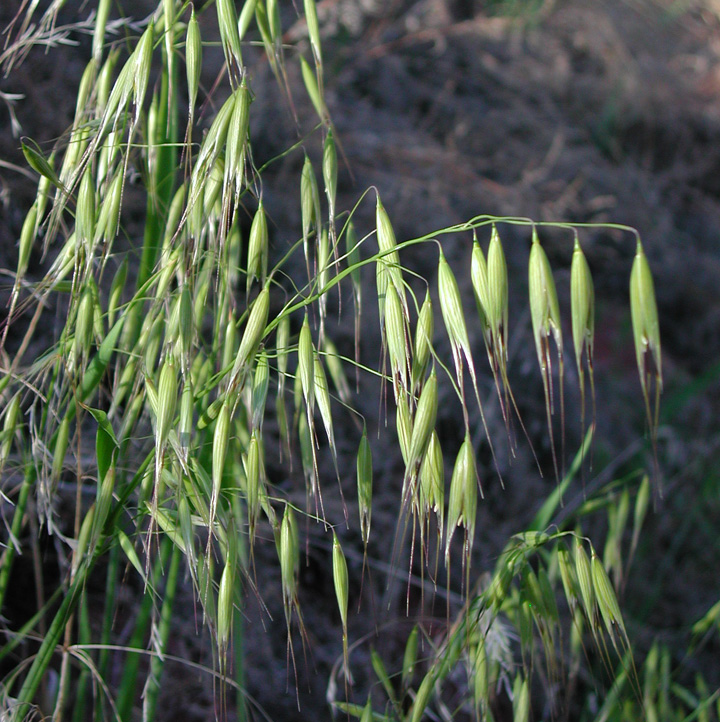Avena
|
Family: Poaceae |
Plants annual or perennial. Culms 8-200 cm, erect or decumbent. Sheaths open; auricles absent; ligules membranous; blades usually flat, sometimes involute, lax. Inflorescences panicles, diffuse, sometimes 1-sided. Spikelets 15-50 mm, laterally compressed, with 1-6(8) florets; rachillas not prolonged beyond the uppermost floret; disarticulation above the glumes, usually also between the florets, or cultivated forms not disarticulating. Glumes usually exceeding the florets, membranous, glabrous, 3-11-veined, acute; calluses rounded to pointed, with or without hairs; lemmas usually indurate and enclosing the caryopses at maturity, 5-9-veined, often with twisted, strigose hairs below midlength, apices dentate to bifid or biaristate, awns (if present) dorsal, usually once-geniculate and strongly twisted in the basal portion; paleas bifid or entire, ciliate on the keels; lodicules 2, free, glabrous, toothed or not toothed; anthers 3; ovaries hairy. Caryopses terete, ventrally grooved, pubescent; hila linear. x = 7. Name from the Latin avena, oats. ©Utah State University. Reproduced by permission. Spikelets 2-5-fld, articulated above the glumes and usually between the lemmas; rachilla often hirsute, at least at the base of the lemmas; glumes nearly equal, membranous or chartaceous, exceeding the lemmas, mostly 5-11-veined; lemmas indurate, tapering to an entire or often 2-toothed tip, firm below, often scarious distally, rounded on the back, obscurely 5-9-veined or prominently so distally; awn arising from the back of the lemma, often geniculate near the middle, or wanting; annuals with broad flat lvs and ample panicles of large, often nodding spikelets. As now limited, ca 15 spp. of Eurasia. Gleason, Henry A. & Cronquist, Arthur J. 1991. Manual of vascular plants of northeastern United States and adjacent Canada. lxxv + 910 pp. ©The New York Botanical Garden. All rights reserved. Used by permission. |

